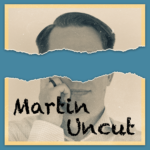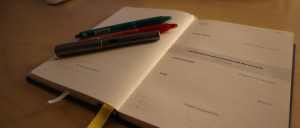
I have in multiple other episodes talked about note taking applications. Mainly Evernote and Obsidian. Today I wanted to switch focus away from the tech into process and how you can write and organize documentation. There are many different ways and approaches to this that you can take and it will likely be a very personal thing to choose something that works for you.
Today I will be talking about Zettelkasten that is one way. It will probably not work for everyone and for every use case. I am using this as a way to build my personal knowledge management system (PKMS). This is used to record my own thoughts and link that to other peoples thoughts with the intention to create something new and unique.
But let jump in!
Zettelkasten is German and means slip box. And is a well known method for research and study purposes. The method was made famous by the German sociologist Nicholas Luhmann who built up a hugh Zettelkasten system containing over 90 000 notes. Luhmann used this to write books and articles, a lot of them, 70 books and more then 400 articles. This system was fully paper based but still worked well. It was not Luhmann invention though. It has been around since at least the 1600-century by Conrad Gessner, a Swiss physician.
There are a certain workflow related to the Zettelkasten system that guides how it’s being created and updated. You gather two types of notes.
- Fleeting Notes are quick notes captured when you come up with random ideas or something hits you. You gather and collect these notes into an inbox. These are in various different states of completness or value.
- Literature notes are notes being created while consuming other peoples contents. The name points towards literature but it could also be other types of content such as blog posts and articles, radio or podcast, video such as youtube.
It is important that both these note types are written by your own words. Quotes is the only exception to this rule, but these should be used spareingly. If you cannot explain something, you do not understand it, and thus it shouldn’t go into your Personal Knowledge Management System — since it is note knowledge.
You should process these notes and find out if they contain any ideas. If they do you can extract that idea. It should be unique and atomic. And again, written with your words. This becomes a durable note or a permanent note. Something that you will store in your personal system for a longer time. You also link this idea to other ideas an in this way you can start building your personal knowledge graph. You constantly need to work on your notes and extend the linkage between them as your knowledge grows.
Now your are in a position where you can start looking at what you have gathered and from this build your own unique ideas or concept that can be presented in an article, podcast, video or why not a book. The end goal to actually create something from the gathered information is important. It will help you create a system that you can easily find things in and builds value for you. Without that intent you may end up in the hording crowd; gathering information for the saker of gathering.
How do I use this. My Zettelkasten system i still very small. I think it is sad that I didn’t know about this system earlier. Allready back att University. What if I started to build my graph then. I would have such a big amount of knowledge to work with, to dig in and get new ideas and content for articles and blogs. Or maybe that book that I dream of writing sometime in the future. I like to read and learn. And I am going to use the system to capture knowledge from the things so that I can more easily access it when I need to and also find patterns and links to other things I know.
I think this is super interesting and it is so simple but yet so powerful.


